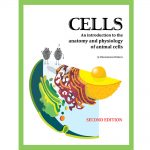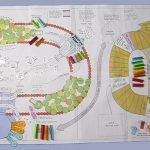- Description
- Additional information
Description
“Cells; An Introduction to the Anatomy and Physiology of Animal Cells”
FREE SAMPLE CHAPTERS:
Click to download chapters 1 and 2
Click to download activity section for chapters 1 and 2
Target age group: ages 10-15
Topics covered: The history of the discovery of cells, the molecule structure of phospholipids and phospholipid membranes, the cytoskeleton and its functions, motor proteins, ATP and the mitochondria, how the electron transport chain works, amino acids, proteins, DNA discovery, translation, transcription, mRNA, tRNA, ribosomes, chaperone proteins, lysosomes, enzymes, endoplasmic reticulum, Golgi bodies, docking proteins and protein synthesis inside endoplasmic reticulum, the structure of the nucleus, the nucleolus and how ribosomes are made, histones, nucleosomes, rRNA, cell metabolism, overview of digestion, chylomicrons, fatty acids, glucose, the Krebs cycle, acetyl-CoA, phagocytosis, pinocytosis, exocytosis, glycolysis, mitosis, meiosis, and overview of common body cells such as epithelial (skin, capillary, goblet, villi), muscle cells, neurons, bone cells and blood cells.
Length of student text: 80 double-sided pages (black and white)
Length of teacher’s section (extra activities): 55 doubled-sided pages, plus an appendix with some color pages showing pictures of crafts
Activities included: Fluid mosaic model, membrane simulations, motor protein pen craft, “Motor Protein Relay Race,” diffusion demonstrations, “Electron Transport Chain Relay Race,” protein pencil topper craft, tRNA cookies, hands-on activity about transcription and translation, “Roller Coaster Review” game, “Translation Relay Race,” lysosome simulation game, edible Golgi body models, DNA extraction lab, some virtual DNA labs (online), make a cell “mini-mural” from scratch, cell bingo (with challenging review game), “Respiration Relay Race,” mitosis flip book, “Jeopardy” review game, and edible models of blood cells.
Internet links: A notable feature of this curriculum is that it incorporates the very best (free) videos available online. I’ve scoured the Internet to find video clips that illustrate the concepts in the text. Some of the videos are truly stunning. Many provide 3D images or animations that illustrate the text perfectly. You can access all of the YouTube links by using my YouTube channel: www.YouTube.com/TheBasementWorkshop
NOTES:
— You can still use the curriculum even if you can’t access the Internet links. The links are really terrific, but they are not so essential that you can’t do the curriculum without them.
— The concepts covered in this curriculum are considered “high school level” (some AP level, in fact). However, they are presented in a manner that makes them accessible to younger students. The activities that go along with the text are a key part of making these concepts understandable to younger ages. Yes, it is worth it to gather the materials for the crafts and the labs!
— You’ll notice that quite a few of the activities are group games such as relay races. This curriculum is ideal for doing with a group, but these group activities can be modified for use with just one or two students. Don’t shy away from using it just because of the group activities.
Additional information
| Weight | 0.04 lbs |
|---|









